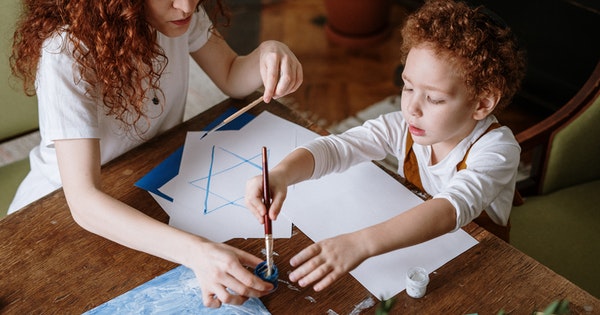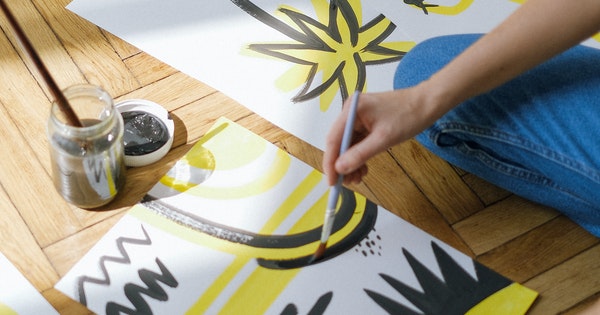Importance of Art in Life and in Child Development
The existence of art is as old as the start of humanity in the world. When Adam and Eve started their journey in this world without any material things, all they had to do was utilize their creativity to make do which led them to use tree leaves to cover their bodies. This shows the relationship between arts and human beings goes a long way back in history. The importance of art can be reflected in the world of what we live in today. The inventions that we see today and have changed the modern world’s course started with a new creative idea.
Table of Contents
What is Art anyway?
Merriam Webster defines art as “something created with imagination and skill, and that is beautiful, or that expresses important ideas or feelings.”
There are no fixed criteria as to what art is. It comes in many forms, and people execute art in many ways, each depending upon their individuality or need. Nonetheless, art means creating something new using one’s imagination and creativity. So, it is executed and interpreted by people differently. The abstract and flexible nature of art is part of every discipline, such as music, poetry, writing, painting, marketing, architecture, psychology, sciences, business, etc. This is why the importance of art remains the same even after the progress in science.
Importance of Arts in Life
If we look around us, art is everywhere. It goes beyond all the geographic and cultural boundaries. The books we read and the movies humans so fondly watch are because of the creativity and imagination we call art. it provides humans with the opportunity to understand the world, themselves, and their surroundings. Humans are naturally passionate and curious beings. Art makes it easy for us to project our passion, thoughts, and emotions. A famous quote from the film The Dead Poets Society elaborates the importance of arts in our lives beautifully.
“We don’t read and write poetry because it’s cute. We read and write poetry because we are members of the human race. The human race is filled with passion. And medicine, law, business, engineering — these are noble pursuits and necessary to sustain life. But poetry, beauty, romance, love — these are what we stay alive for.”
1. Art and Cultures
Looking around, humans are surrounded by different cultures, societies, languages, and systems. In all aspects of our lives, art is the common factor beyond all these boundaries and unites humans. Art is a tool that brings passion and emotions to any culture. Therefore, people describe having a sentimental bond with their cultures or history. Moreover, before any proper distinction between cultures and disciplines started, people used art to convey their emotions using different arts, i.e., painting, music, poetry, etc. With time when cultures modified, and the world progressed towards development, art delivered a deeper understanding of various cultures and provided an opportunity for humans to develop further towards betterment.
2. Art in Science
Even though humans differentiate art from science but the truth is science and art go side by side. By taking a deeper look into the history of civilization’s development, one can observe the imaginative and creative abilities of people who invented tools that are the basis of science today, e.g., the wheel. From Stone Age to Renaissance, history is filled with such examples. Architecture – another discipline of science – is full of the concepts of art. Furthermore, Hippocrates, Ibn Sina (Avicenna), and others are known as influential medical figures who use their creativity to study human anatomy without any tools. Therefore, it would not be wrong to say that art and science are two sides of the same coin.

Importance of Art in Education
It is imperative to teach students art subjects like music, painting, literature, and poetry and it brings diversity to their routines and encourages students to adopt a healthy hobby. It is said to adopt a balanced curriculum with science, arts, technology, humanities, and mathematics to provide students with the necessary exposure to every field. Later, they can select the field of interest.
Mathematics is considered an important discipline in our education. If looked closely, it is full of art. The presence of shapes, i.e., circles, squares, hexagons, triangles, etc., in children’s Montessori and math books, is widespread. It teaches them the basics of geometry. Also, the children’s math or any other books are laden with pictures to facilitate their learning and memory. The use of rhymes or songs to help kids memorize is another example we see so often. Researchers validate the use of certain types of music for better memory. Lastly, literature, arts, and music are necessary subjects to encourage children to learn various types of knowledge as it stimulates various areas of the brain.
However, the importance of art in education goes beyond having art subjects in the curriculum. Using creativity to teach children is important to have a greater impact on their minds. It piques students’ interest in attending the class, and they learn faster.
Importance of Art in Child Development
It is a common belief that art is important for the development of children in their early stages. Various research has proved the importance of art in developing children’s senses, language, emotional expression, and cognitive abilities. In fact, many developmental theories are based on inculcating art in children’s daily lives.
1. Life Skills
Children love to play games. Games are indeed fun, but they are a great way of teaching life skills to children fun. It also teaches children to move on from one loss and learn from every mistake. Moreover, these games are a great way to teach children problem-solving skills. Children have curious nature, and art facilitates them using their curiosity to adopt new ways of solving problems.
2. Gross and Fine Motor Skills
Motor skills are the ability to move, whereas gross motor skills refer to the big movement gestures and coordination, i.e., walking, standing straight, etc. Fine motor skills involve delicate and small gestures, e.g., holding a pen, using forks, turning a page, etc. Art is essential to help children develop their motor skills. Dancing helps to develop balance and coordination of body parts to produce a rhythmic movement. At the same time, painting helps the kids develop their fine motor skills.
3. Communication Skills
We see the use of pictures to teach children to read and speak. This is because visual learning has a greater impact on memory. Through these pictures, cartoons, and musical poems, children learn to speak and develop their communication skills.
4. Social and Emotional Expression
Various forms of art are a way to teach children different emotions and healthy ways to express them. Through art, children learn sharing, patience, and collective efforts. All these skills are necessary to develop a healthy social life.
5. Cognition Development
Cognition is the ability to think, perceive and interpret. Through art, children can enhance their perception and critical thinking. Additionally, different forms of art, i.e., music, literature, etc., provide an opportunity to practice their interpretive skills.

Arts and Psychology
The relationship between arts and psychology is inseparable. Many intelligence and personality test that psychology use has components of art pieces. Psychologists use these tests to interpret their personalities and calculate their intelligence. Moreover, the use of color psychology in our daily lives is another example of why art and psychology go hand in hand. Lastly, music, painting, dancing, etc., are cathartic activities as they provide a way to express emotions. Hence, promoting healthy and positive mental health.
Conclusion
.In conclusion, one cannot imagine a world where art is absent. Imagine a world without music, books, movies, literature, and the invention of new things. It would be not only boring but also devoid of creative learning. There is no life in the lives of humans without art. Therefore, the importance of art should be highlighted, and more thought should be given to developing art in various areas of our lives




